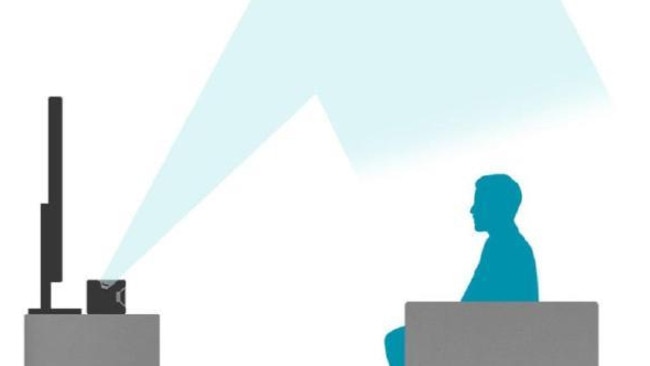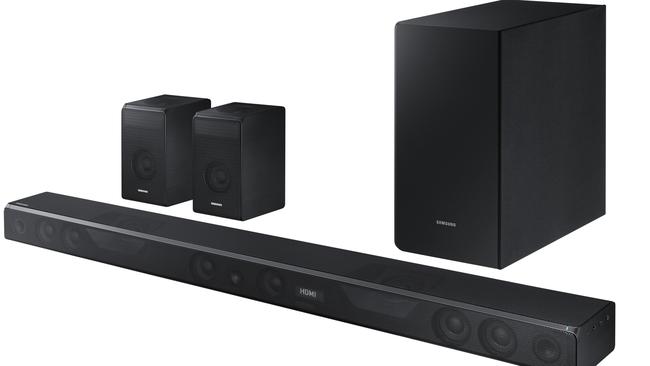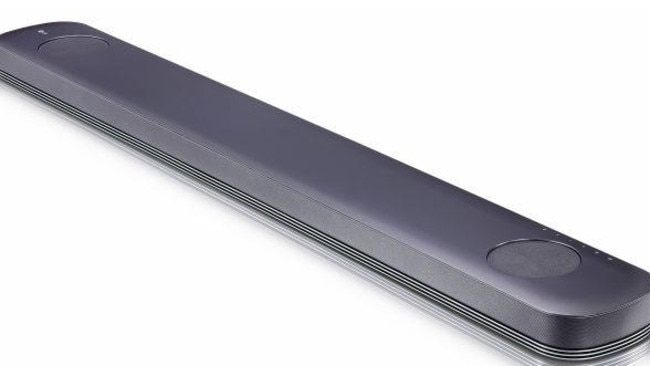Samsung K950 vs LG SJ9: Which Dolby Atmos soundbar is better?
YOU might not know it, but one of the most common items in your living room has become outdated, with new technology taking its place.
THERE is no denying having surround sound in your living room makes playing video games and Netflix binge-sessions a much more immersive experience.
And with new televisions offering cinema quality pictures, it makes sense you would want the sound to match.
The only problem is traditional predetermined channel locations defined by the 5.1 or 7.1 speaker set-up is quickly becoming outdated, with Dolby Atmos technology now leading the way for home theatre experience.
First introduced to the cinema in 2012, Dolby’s new technology works with everything from a 192-speaker cinema set-up to a soundbar or compatible smartphones using stereo headphones.
Dolby Laboratories vice president of sound tech research and development Brett Crocket explained Atmos delivers moving audio that can be precisely placed in a three-dimensional space, including anywhere overhead.
“It allows the filmmaker to decide exactly where the sound should originate and where it should move as the scene develops,” he told news.com.au.

To put this into perspective, think of a scene in a movie with a helicopter taking off and then flying in circles around a building top.
With traditional predetermined 5.1 or 7.1 setups, that audio has to be assigned to specific channels and can be lost when mixed together with other sounds.
Atmos frees sound from channels and allows sounds to exist as individual entities, which means they can be precisely placed and moved anywhere in your room to mimic what you would hear in real life.
This means, with Atmos, you would actually have the illusion of a helicopter taking off and flying around inside your living room.
The technology is able to recreate these sounds by using speakers including both traditional front-firing and upward-firing elements.
“Dolby Atmos knows where your speakers or soundbar are located and will render the audio to be delivered in the way creatives intended,” he said.
“We perform a lot of testing in odd shaped rooms and have found Dolby Atmos to be very resilient. We joke that we dare people to find a room that the technology will sound bad in.”
There are currently more than 70 audio/video receivers (AVR), 40 speaker models and 13 soundbars capable of delivering a Dolby Atmos audio experience.
We tested both Samsung’s Series 9 HW-K950 and LG’s SJ9 Dolby Atmos soundbars. Here is how they stack up.
DESIGN

K950: Samsung has managed to keep the design simple, yet elegant.
Curved, brushed aluminium covers each end of the soundbar and small strip runs across the top to divide the black steel mesh.
Other than a single LED light and four controls buttons on the side, the soundbar has been stripped of unnecessary details.
The discreet device can be positioned in front of most TVs without covering too much of the bezel or it can be secured to the wall with the supplied mount.
The K950 soundbar includes 11 separately-amplified speakers — including two upward firing for the authentic Atmos effect.
Samsung also includes a rectangular subwoofer, which can easily be tucked away under a couch.
Unlike the SJ9, the K950 comes with two rear wireless speakers with forward-firing and upward-firing drivers, although both require separate power outlets.
The remote has been stripped back to the bare minimum, but admittedly it did take some time to get used to.

SJ9: The SJ9 is a smooth, polished looking product, which opts away from industrial grilled finish of Samsung’s model.
Metal strips along the bottom of the soundbar offer a certain class, while its curved edges help soften the design.
A thin mesh has been used to disguise an LED display inside the unit, which is slightly thinner than the K950.
The soundbar has seven separately-amplified speakers — including two upward firing, which can be seen through small circles on top of the unit.
Unlike Samsung, LG has opted for a its subwoofer to have a more cubic design and while this makes it slightly harder to hide, it is far from an eyesore.
LG has also opted for a minimalist remote, although it does feature slightly more buttons than that of the K950.
Like Samsung’s product, the SJ9 can sit in front of the TV or be wall-mounted.
PERFORMANCE
Apart from the benefit of adding rear speakers, both the SJ9 and K950 offer spectacular sound using the Dolby Atmos technology.
The SJ9 and K950 both handle vocals very well by smoothly blending them with their on screen environment — this means there is no need to keep turning the volume up and down to avoid different audio ranges in different scenes.
Both subs offer punchy sound, but ensure there isn’t any gap in the dynamic range between the deepest bass depths and the lower mid-range.
Thankfully, the products live up to Dolby’s promise of being able to deliver quality sound in a wide variety of rooms — my high ceilings and wide living room still got high quality audio.
Despite the SJ9 carrying dedicated ‘rear channel’ drivers, it couldn’t match the actual rear speakers offered with the K950, which gives Samsung the slight advantage.
It must also be mentioned that there are currently only 150 blockbuster titles rendered in Dolby Atmos, but more are coming available.
VERDICT
As both of these products had to pass benchmarks to carry the Atmos label, both are good options.
The design aspects of both are very subjective and would rely on the taste of the individual — I personally like elements of both and would have no problem having either in my home.
For me, the rear speakers of Samsung’s K950 make it the slightly better option in terms of immersive sound, but this is far from a disapproval of LG’s SJ9.
It must also be mentioned the benefit of having to rear-firing speakers comes at an extra cost, so it depends if you are willing to part with that money.
Both are well worth your time and will take your living room into the future.
The SJ9 and K950 retail for $1240 and $1687, respectively.
Have you tried these products? Continue the conversation in the comments below or with Matthew Dunn on Facebook and Twitter.



